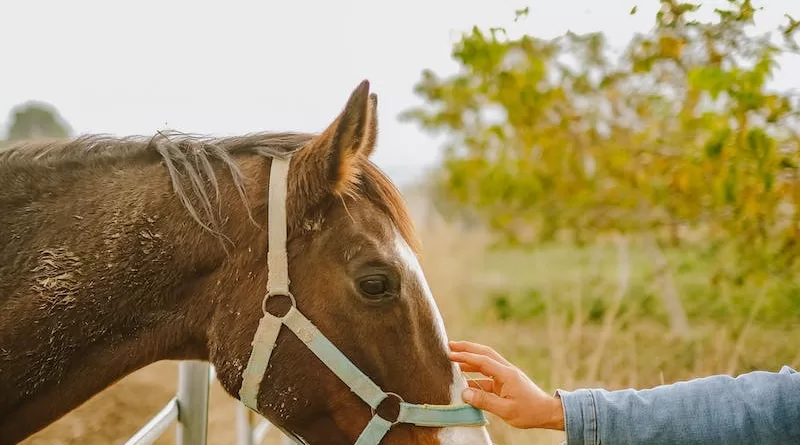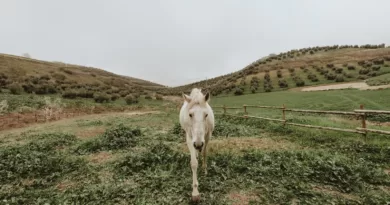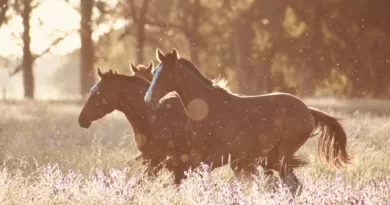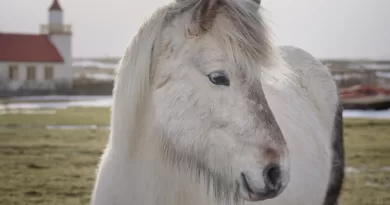How to Trot on a Horse
Heading 1: Understanding the Trotting Gait
Understanding the Trotting Gait
The trot is a two-beat diagonal gait commonly seen in horses. It is a symmetrical gait where the horse’s legs move in pairs – the front left leg and the back right leg move together, followed by the front right leg and the back left leg. This rhythmic and energetic movement allows horses to cover ground efficiently, making it a popular gait in various equestrian disciplines.
During the trot, the horse’s body undergoes a moment of suspension where all four hooves are off the ground. This floating phase provides riders with a unique sensation and also allows them to cue the horse for transitions or specific movements. The trot can vary in speed, from a slow and collected trot to a powerful and extended trot. Each variation requires different techniques and skills from the rider, highlighting the importance of understanding the fundamentals of this gait.
Heading 2: The Importance of Proper Positioning
Proper positioning is key when it comes to riding and trotting with your horse. By maintaining a balanced and centered position in the saddle, you can effectively communicate with your horse and ensure a smooth and comfortable ride. One of the most important aspects of proper positioning is aligning your body in a vertical line, allowing you to distribute your weight evenly and maintain stability. This means keeping your head up, shoulders relaxed, and hips and heels aligned.
Additionally, it is crucial to have a relaxed and supple seat while trotting. This enables you to move with your horse’s motion and stay in harmony with each stride. Avoid gripping the reins or the horse’s sides tightly, as this can create tension and hinder your balance. Instead, focus on maintaining a light and elastic contact with your horse, allowing for clear and effective communication. Remember, a rider with a secure and balanced position can better support and guide their horse, leading to a more enjoyable and successful trotting experience.
Heading 2: Developing a Secure Seat in the Saddle
Developing a secure seat in the saddle is essential for any rider, regardless of their discipline. A secure seat not only allows the rider to maintain balance and stability, but it also enables better communication with the horse. One key aspect of developing a secure seat is having a strong lower body. Riders should aim to have relaxed yet engaged thighs and calves, allowing them to absorb the horse’s movement while maintaining a steady position in the saddle. Additionally, developing a strong core is crucial, as it provides stability and support to the upper body, enabling riders to stay centered and balanced.
Another important element of a secure seat is maintaining proper alignment. Riders should aim to have their ears, shoulders, hips, and heels in line. This alignment helps distribute the rider’s weight evenly and allows for a more balanced and effective position in the saddle. It is also important to avoid gripping with the knees or gripping too tight with the lower legs, as this can hinder the rider’s ability to follow the horse’s movement and can contribute to tension in the upper body. Instead, riders should focus on maintaining a supple lower body that moves with the horse and allows for clear and effective aids. Developing a secure seat in the saddle takes time and practice, but with dedication and proper technique, riders can enhance their riding skills and improve their overall connection with their horse.
Heading 2: Establishing Effective Communication with Your Horse
To establish effective communication with your horse, it is important to understand their language and signals. Horses communicate primarily through body language, using subtle cues and gestures to convey their thoughts and emotions. By observing your horse closely and paying attention to their movements and expressions, you can start deciphering their messages. For example, a relaxed and forward posture indicates that the horse is calm and comfortable, while pinned ears or a swishing tail may suggest agitation or discomfort.
Additionally, building a strong bond with your horse is crucial for effective communication. Spending time together, grooming, and engaging in activities like groundwork can help foster trust and understanding between you and your equine partner. It is important to approach these activities with patience and respect, allowing the horse to feel safe and secure in your presence. Taking the time to develop a strong foundation of trust and communication will ultimately enhance your riding experience and create a more harmonious partnership between you and your horse.
Heading 2: Preparing Your Horse for the Trot
As any seasoned equestrian knows, proper preparation is key when it comes to transitioning your horse into the trot. Before asking your horse to perform this gait, it is important to ensure that they are physically and mentally prepared. A crucial step in preparing your horse for the trot is a proper warm-up routine. This allows their muscles to loosen up and helps prevent any potential injuries. Begin by walking your horse in a relaxed manner, allowing them to stretch and warm up their muscles gradually. Be sure to include some gentle bending and flexing exercises to encourage suppleness and flexibility.
In addition to the physical aspect of preparation, it is also essential to prepare your horse mentally for the trot. Horses are highly sensitive animals and are adept at picking up on their rider’s emotions and cues. Before asking for the trot, it is important to establish a calm and confident mindset yourself. This will help your horse feel at ease and more receptive to your aids. Take a moment to focus on your breathing and clear your mind of any distractions. By being present and in the moment, you can create a harmonious connection with your horse that is essential for a successful trotting session.
Heading 2: Initiating the Trotting Motion
To initiate the trotting motion, it is important to give your horse clear and concise aids. Begin by sitting deep in the saddle, engaging your core muscles, and applying gentle pressure with your legs. This leg pressure should be behind the girth, cueing your horse to move forward. Maintain a light contact on the reins, keeping your hands relaxed and following the motion of your horse’s head. As you apply the leg aid, it is important to avoid kicking or squeezing too hard, as this may cause your horse to rush or become tense.
In addition to the leg aid, you can use your voice to encourage your horse to trot. A simple verbal cue, such as saying “trot” or using a clucking sound, can signal to your horse that it is time to transition into a trot. Remember to stay calm and confident in your aids, as horses can sense any tension or uncertainty. With practice and consistency, your horse will begin to understand and respond to the cues, smoothly transitioning into the trotting gait.
Heading 2: Maintaining a Consistent Rhythm
Maintaining a consistent rhythm is crucial when it comes to the trotting gait. This smooth and steady pace ensures that both you and your horse are in sync, allowing for better communication and balance. To achieve and maintain this rhythm, it is important to stay relaxed in the saddle and follow the natural movement of your horse.
One key element to maintaining a consistent rhythm is to have a balanced and secure seat. Keep your weight evenly distributed in the saddle, maintaining a straight line from your ear to your shoulder, hip, and heel. This will help you stay centered and in harmony with your horse’s motion. Additionally, engage your core muscles to stabilize your position and absorb any slight variations in your horse’s movement. By being in a balanced and secure seat, you not only maintain a steady rhythm but also enhance your overall control and connection with your horse.
Heading 2: Controlling the Trotting Speed
Once you have established a comfortable and consistent trot with your horse, it is important to learn how to control the speed of this gait. Controlling the trotting speed allows you to maintain a steady rhythm and ensure a safe and balanced ride. One simple yet effective way to control the speed is through the use of half-halts. A half-halt is a subtle, half-second rein cue that asks the horse to rebalance and slow down while continuing to move forward. By applying a gentle squeeze and release of the reins, you can signal your horse to collect and rebalance without disrupting the rhythm of the trot.
In addition to half-halts, your seat and body position also play a crucial role in controlling the trotting speed. A strong and balanced seat will allow you to influence your horse’s stride length and cadence. To slow down the trot, sit deep into the saddle with a relaxed yet firm posture. This will encourage your horse to shorten their stride and slow their tempo. Conversely, if you want to increase the speed, lift your seat slightly out of the saddle and apply subtle leg aids to encourage your horse to lengthen their stride. Remember to always maintain a light and responsive contact with the reins, as this will enable clear communication with your horse and aid in maintaining control over the trotting speed.
Heading 2: Mastering Transitions to and from the Trot
Mastering transitions to and from the trot is an essential skill for any equestrian. Seamless and smooth transitions not only enhance the overall flow of the ride but also contribute to the horse’s balance and responsiveness. To achieve mastery in these transitions, it is crucial to have a solid understanding of the aids and cues required.
When transitioning from a walk to a trot, a clear and subtle aid is necessary to signal the horse. Begin by applying light leg pressure while simultaneously engaging your seat and core muscles. Maintaining a steady contact with the reins is crucial to ensure the horse understands the cue. As the horse responds and begins to move into the trot, it is essential to keep a balanced position in the saddle, ensuring that your weight is equally distributed and your body is aligned. Developing a secure seat will not only aid in the transition but also provide clarity and stability for your horse as they adjust to the new gait.
Heading 2: Troubleshooting Common Trotting Challenges
Experiencing challenges while trotting is not uncommon, especially for beginner riders. One of the most common issues riders face is maintaining a steady rhythm. When the trot becomes uneven, it can be uncomfortable for both the rider and the horse. To troubleshoot this challenge, it is important to focus on your own position and balance. Ensure that your weight is evenly distributed in the saddle and that you are sitting tall with a relaxed upper body. By maintaining a solid position, you can better support your horse’s motion and help him find a consistent rhythm.
Another common challenge when trotting is controlling the speed. Sometimes, horses might start trotting too fast or too slow, making it difficult for the rider to maintain control. To address this, riders should work on developing effective communication with their horse. Use clear and consistent aids, such as leg pressure and reins, to indicate the desired speed. Experiment with different levels of pressure and release to find the right balance that encourages your horse to maintain a steady and controlled trot. Additionally, practicing half-halts and transitions between walk and trot can help regulate the speed and teach your horse to respond promptly to your cues.
How does the trotting gait differ from other gaits?
The trot is a two-beat gait where the horse’s front and hind legs move in diagonal pairs. It differs from other gaits like the walk or canter in its rhythm and footfall pattern.
Why is proper positioning important when trotting?
Proper positioning ensures a balanced and effective riding posture, allowing the rider to maintain control and communicate effectively with the horse. It also helps prevent strain or discomfort during the trotting motion.
How can I develop a secure seat in the saddle while trotting?
Developing a secure seat involves maintaining a balanced position, engaging your core muscles, and relaxing your hips and legs. Regular practice and lessons with a qualified instructor can help you improve your stability in the saddle.
How can I establish effective communication with my horse during the trot?
Effective communication with your horse involves using your natural aids (such as your seat, legs, and hands) to give clear and consistent signals. Building a strong partnership with your horse through training and practice is essential for effective communication.
How should I prepare my horse for trotting?
Before trotting, ensure that your horse is properly warmed up with exercises such as walking and stretching. Check that your equipment, such as the saddle and bridle, is correctly fitted and comfortable for your horse.
How do I initiate the trotting motion?
To initiate the trot, sit deep in the saddle, apply light pressure with your legs, and give a clear cue with your seat or voice. Practice transitioning from a walk to a trot gradually until your horse responds smoothly to your aids.
How can I maintain a consistent rhythm while trotting?
To maintain a consistent rhythm, focus on your own body’s movement and try to match it with your horse’s motion. Keep a steady contact with the horse’s mouth through your reins and follow the horse’s movement with your seat and legs.
How can I control the speed of the trot?
Controlling the trotting speed involves using your seat, legs, and reins to communicate with your horse. Applying gentle half-halts or using your body position to slow down or increase your energy can help you regulate the speed.
How can I master transitions to and from the trot?
Mastering transitions requires clear and precise aids from the rider. Practice transitioning smoothly between the walk, trot, and halt by using your seat, legs, and reins in a coordinated manner.
What are some common challenges faced while trotting and how to troubleshoot them?
Common trotting challenges include maintaining balance, rhythm, and control. Troubleshoot by practicing exercises that improve your core strength, seeking guidance from an experienced instructor, and gradually increasing the difficulty of your training sessions.




